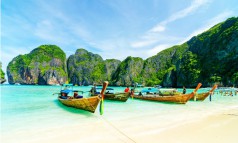



















Thursday, Jul 07, 2022 08:15 [IST]
Last Update: Thursday, Jul 07, 2022 02:37 [IST]
The history of electoral democracy in Sikkim
(Dedicating to the 50th year of The Tripartite Agreement of 8th May 1973)
PART-IV
Events followed as on the 20th of May 1991, Dil Kumari Bhandari (SSP) was elected to the 10th Lok Sabha and her crowning glory came on August 1992, when the Nepali language was recognized as a the official language of India and thus include in the 8th schedule of the constitution of India - a landmark feat that immortalizes her and the leadership of N.B. Bhandari and the SSP’s contribution in this historic achievement. On the 16th 0f June 1992, Pawan Chamling was removed from the council of ministers and from the primary membership of the SSP too, then what followed next became one of the iconic moment, the turning point in the democratic, political history of Sikkim, that on the 9th of September 1992, Pawan Chamiling lit a candle inside the Legislative Assembly of Sikkim to find democracy and said that there was no democracy in Sikkim, was it in the chief minister’s pocket then. Subsequently, on the 4th of March 1993, he formed a new political party, the Sikkim Democratic Front (SDF).
The extension of the Central Income Tax act 1961, the Wealth Tax, 1957 and the Gift Tax, 1958 were extended were extended to the State of Sikkim without the concurrence of the state government in exercise of the powers conferred under clause(n) of Article 371-F of the constitution of India. This sudden unilateral decision by the centre government created a mass disenchantment amongst the members of the Sikkim Legislative Assembly and a group of 18 legislature led by Chamla Tshering including the Speaker of SLA, Dorji Tshering Bhutia elected Sanchaman Limboo as their leader and revolted against the then chief minister, N.B. Bhandari. Eventually the Bhandari led SSP government lost the vote of confidence and Sanchaman Limboo was sworn in as the 4th chief minister on the 18th of May, 1994 by the then Governor, Admiral R.H. Tahiliani (Retd.).
The 1994 Assembly elections was also contested by three national parties, the Bharatiya Janata Party(BJP) was entering into Sikkim politics for the first time and the INC was the incumbent ruling government and the CPM continued its participation in Sikkim’s electoral field. The election was a showdown between the SSP and the newly formed SDF but the INC made it a triangular contest and others in the contest were the Revolutionary Socialist Party and as usual the independents. The total number of electors crossed the two lakhs mark at 2,17,743 and the polling date was fixed on the 16th of November, 1994 to decide the fate of 188 candidates with the polling percentage recording at a very high of 81.76%.
However, the big result was that the sitting chief minister, Sanchaman Limboo lost by a margin of 145 votes to Ashok Kumar Subba an independent candidate who polled 2231 votes and Dil Kumari Bhandari (SSP) lost to Bhoj Raj Rai (SDF) from the Jorethang-Nayabazar constituency and both N.B. Bhandari won from Soreng with a reduced vote share of 51.83% as against 91.0%(1989) and Pawan Chamling from Damthang down to 71.27% as against 94.0%(1989). But there were some nail biting photo finishes, in the Central Pendam-East Pendam constituency, D.P. Kharel (SDF) defeated Sang Dorjee Tamang (SSP) by just 145 votes and more closer in Losing Pacheykhani constituency, D.B. Thapa (SDF) defeated J.K. Bhandari (SSP) by a narrow margin of just 12 votes, in Dzongu constituency, S.G. Lepcha (INC) defeated S.D. Lepcha (SSP) by another 47 votes and another one in the Ranka constituency as Tseten Lepcha (SDF) lost to Rinzing Ongmu (SSP) by a wafer thin 18 votes and for the first time Prem Singh Tamang (Golay) got elected to the SLA from the Chakung constituency by polling in 59.4% of vote share in 1994.
The SDF formed the government by winning 19 seats and securing 42% of the votes in the seats contested and the SSP secured 35.08% winning 10 seats and Pawan Chamling at the age of 44 years was sworn in as the 5th chief minister of Sikkim on the 12th of December, 1994 and P.T. Lepcha as the deputy chief minister, a first in the history of Sikkim and Bhim Prasad Dahal (SDF) was elected as the Member of Parliament to the 11th Lok Sabha on the 2nd of May 1996 who secured 72.15%(1,24,218) votes defeating N.B. Bhandari (SSP) who polled in 24.50% (42,175)votes out of seven contesting candidates.
On the 3rd of October, 1999 The 6th Assembly and Parliamentary elections were held simultaneously. The INC, CPM were the national parties and the SDF, SSP were the state parties contesting the elections along with independents. The total number of electors eligible to vote were at 2,55,377 spread across 390 polling stations, with 105 contesting candidates including 9 independents. Again the polling percentage , voters turnout was similar to that of 1994 at a high of 81.83%. The SDF swept the polls with an absolute majority winning 24 seats securing 52.83% of the percentage of the votes overall and the SSP won 7 seats with 41.88% of vote share, as both the parties increased their vote share w.r.t. 1994 Assembly elections. The Sangha seat was won by Palden Lachungpa, an independent candidate and once again Bhim Dahal was elected for the third time to the 13th Lok Sabha as he secured 52.56% (1,07,828) votes defeating Satish Chandra Rai (SSP) who polled in 42.15% (86,466) votes also in the fray was Som Nath Poudyal (INC) who secured just 4.76%(9762) votes.
Thus on the 11th of October, 1999, Pawan Chamling was sworn in as the chief minister of Sikkim for the 2nd time and Kalawati Subba as the first ever woman Speaker of the SLA, creating a record in independent India’s parliamentary democratic history. Subsequently, on the 1st of September, 2000 and 29th August 2002, all the six legislature from the SSP, Mingma Tshering Sherpa, Sang Dorjee Tamang, Sonam Gyatso Lepcha, J.K. Bhandari, Sonam Dorjee and N.K. Pradhan resigned from the SSP and joined the treasury bench. The lone member and leader of SSP, N.B. Bhandari then merged the SSP with the INC on the 5th of August 2003. The Governor, Sri V. Rama Rao, on the recommendation of the chief minister and the cabinet, dissolved the 6th Legislative Assembly of Sikkim on the 11th February 2004.
The elections to the 7th SLA and the 14th Lok Sabha were held simultaneously on the 11th of May, 2004 and the national parties in the fray were the BJP, CPM, INC and SDF was the lone state party with the SHRP and SSP as registered (unrecognized)parties along with independents. The polling percentage recorded was 79.23% amongst the total of 2,81,917 electors It was a clean swipe for the SDF party, winning 31 seats, climbing to 71.09% of the votes share just surpassing 70.41% highest the SSP secured at its peak in 1989. The INC contesting in 28 seats polled 26.13% of the vote share but only Tshering Lama could win the Sangha seat amongst five other contestants, the highest in any seat in that election. The 2004 elections threw up some astonishing records firstly four candidates were declared uncontested, Pawan Chamling (Damthang), C.B.Karki (Wak),Girish Chandra Rai (Melli),Thenlay Tshering Bhutia (Kabi Tingda) and for the first time three woman legislatures were elected to the SLA, Kalawati Subba (Yoksam), Manita Thapa (Losing Pacheykhani) and Nimkhit Lepcha (Ranka), all from SDF party but the biggest of the news was N.B. Bhandari (INC) losing to N. K. Pradhan (SDF) from the Gangtok constituency.
Thus the legacy of all former and sitting chief ministers finally losing their seats in the SLA continued. Pawan Chamling was sworn for the 3rd time as the chief minister of Sikkim and D.N. Takarpa was elected as the Speaker. Nakul Das Rai was elected to the 14th Lok Sabha as Member of Parliament securing 69.84% (1,53,409) votes defeating his nearest rival Biraj Adhikari (INC) who polled in 27.43% (60,258) votes.
(TO BE CONTINUED)
(The writer is spokesperson, SDF party)
